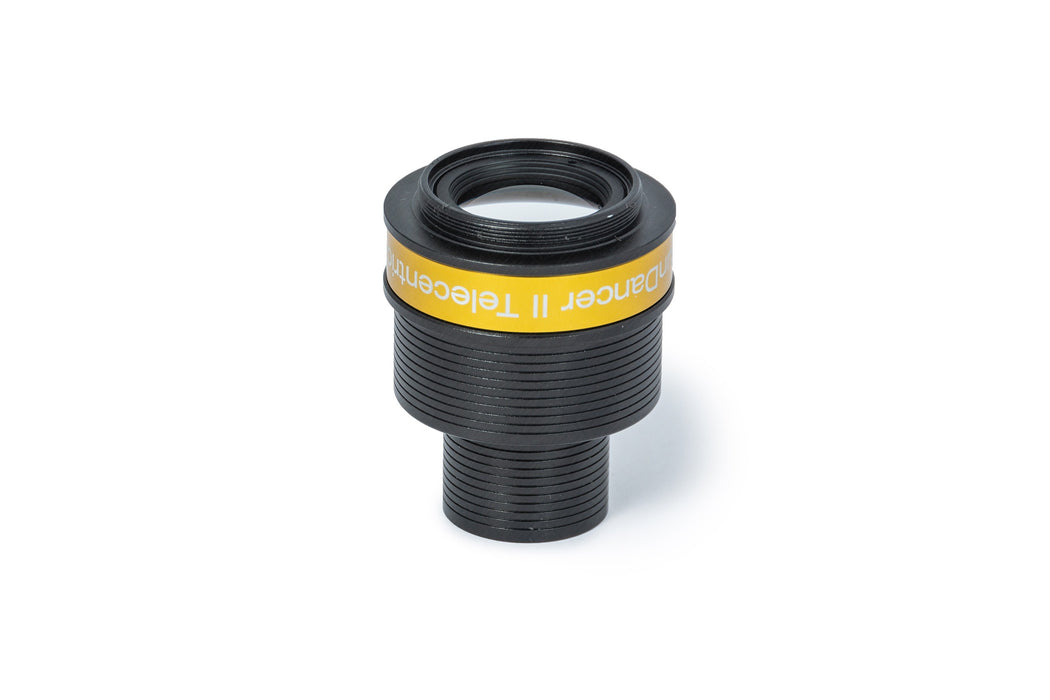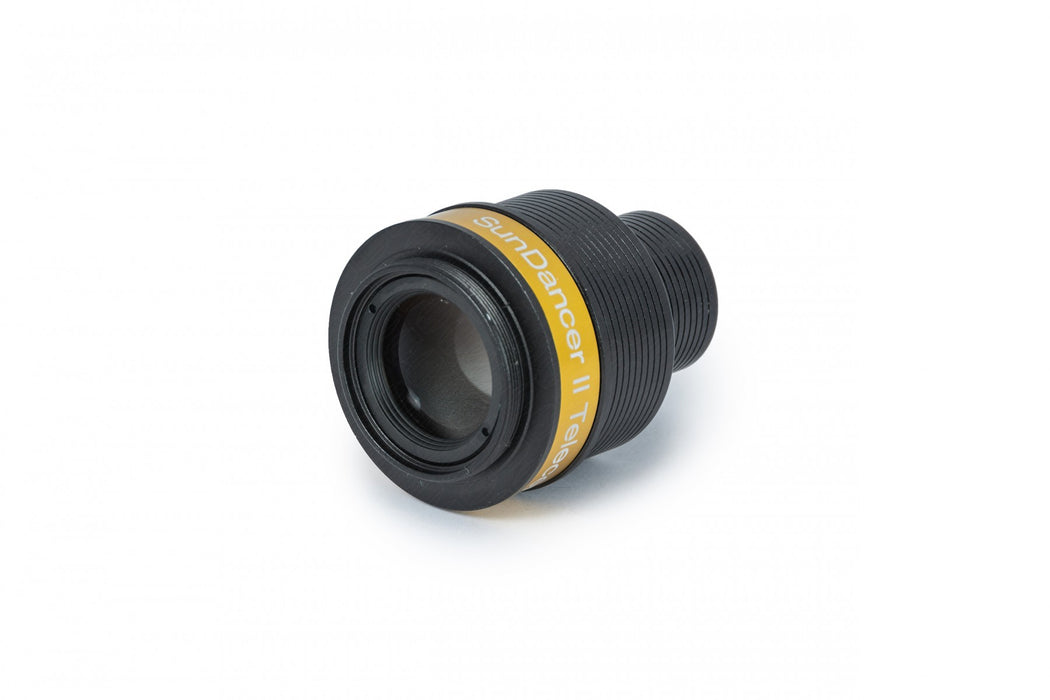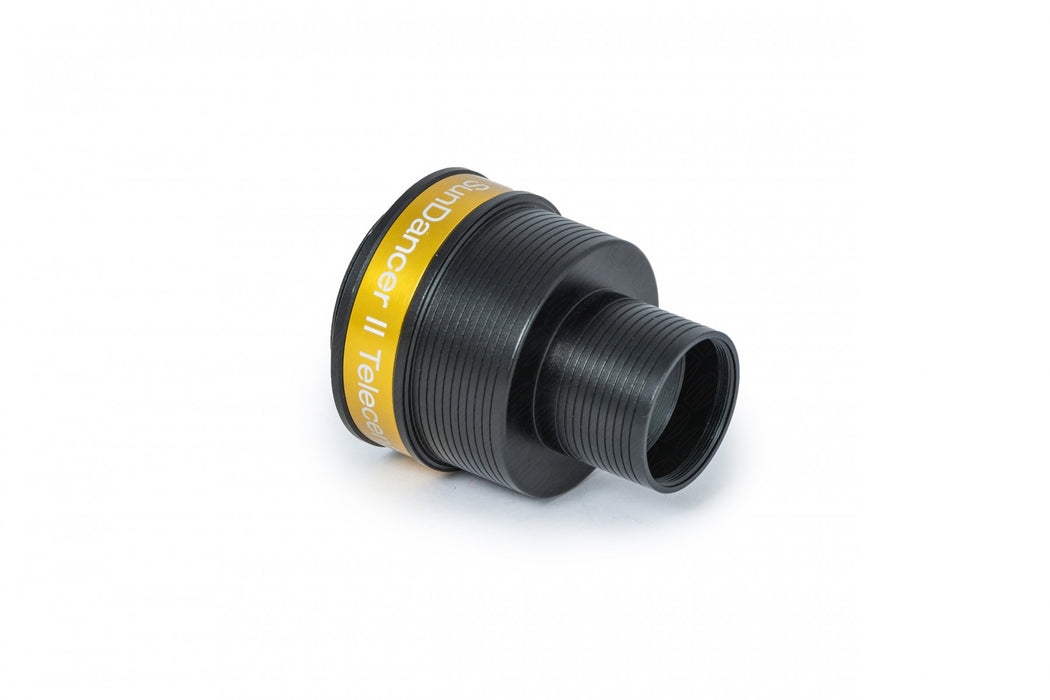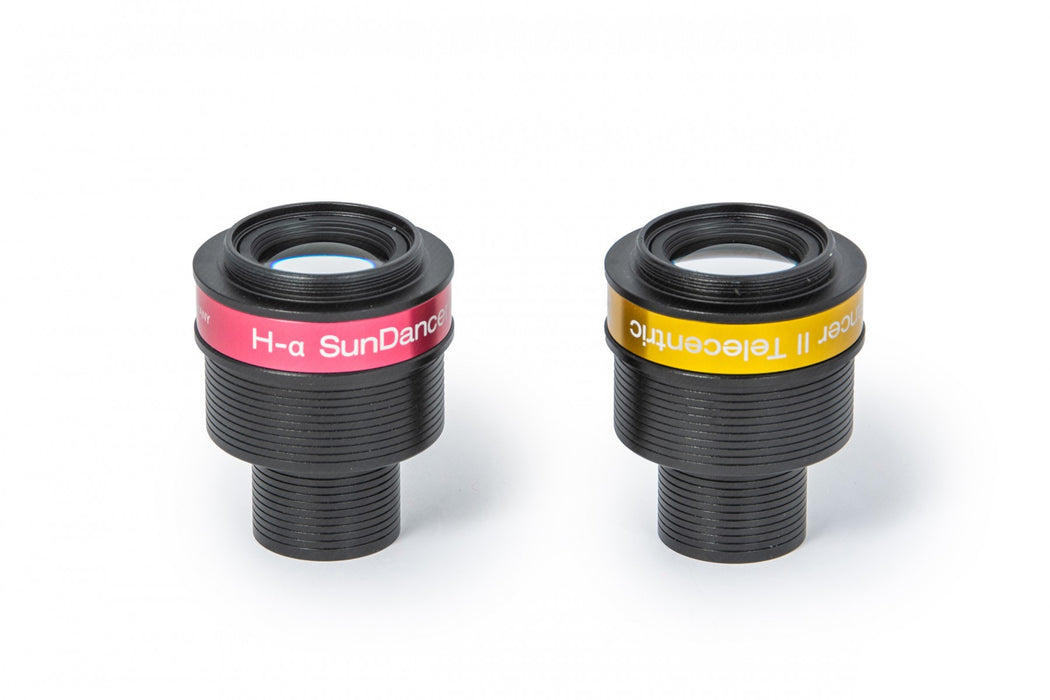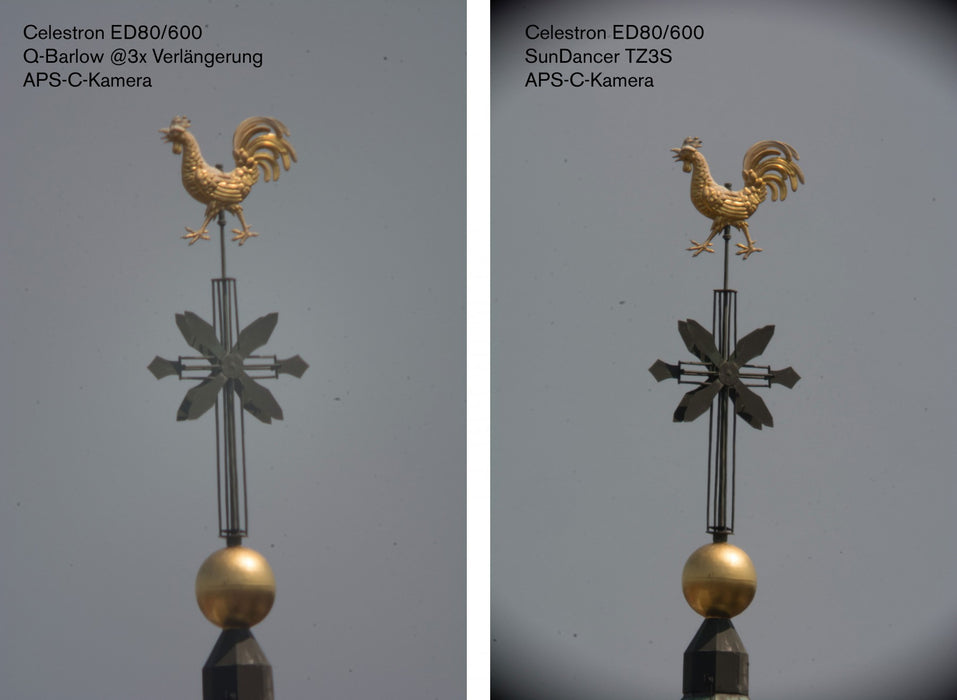- Achromatic 3x telecentric system
- Four-lens optical design, BBAR (Broad-Band Anti-Reflection) coating
- Anti-reflective thread and blackened lens edges against reflections and for maximum contrast
- Image circle 35mm in 65 mm distance to T-2 threaded base
- 1¼" and 2" nosepiece with 1¼" filter thread, T-2 thread on camera side
- The optical design places the telescope's focal point 28 mm behind the end of the 1¼" nosepiece
- 5-year warranty if handled properly
Please note: when using as a telecentric for H-alpha or CaK solar observation, it is mandatory to include a suitable D-ERF filter in front of the telescope aperture to prevent damage to the lens groups in the telecentric due to overheating. Heat/melting damage is not a warranty case, but only occurs due to improper operation.
Baader SunDancer II 3x Telecentric System TZ-3S
Telecentric systems are mainly used in H-alpha filters for solar observation, where the 1/100 lambda plane-parallel etalon in the H-alpha filter requires a perfectly parallelised beam of light over the entire image. These telecentrics deliver very sharp images, but are usually only optimised for the H-alpha wavelength.
This achromatic SunDancer 3x telecentric is designed for the entire visible spectrum and can therefore not only be used on H-alpha systems, but also replace a Barlow lens. Due to the parallel beam of light, it is very good-natured with regard to the working distance: While the magnification factor of a Barlow lens changes with the distance to eyepiece or camera (zoom eyepieces are also based on this principle), the magnification factor and image quality of the TZ-3 do not change, even if the new focal point deviates very significantly from the working distance of the optical design (65 mm).
The achromatic SunDancer II TZ-3S illuminates an image circle of 35mm at a distance of 65mm from the base body, ideal for the small sensors of modern, fast planetary cameras that require high magnifications for photographing the moon and planets. The contrast is better than with simple barlows or the eyepiece projection often used for high magnifications. With the 3x telecentric system, the high magnifications which are necessary for visual observations can also be achieved with long focal length orthoscopic eyepieces. The interpupillary distance of the eyepieces used does not change either.
The connection on the telescope side is made via a dual 1.25"/2" nosepiece with safety kerfs (these prevent tilting due to an incorrectly positioned safety groove and at the same time provide a secure hold). On the camera side, the T-2 thread provides a tilt-proof, fixed connection even to heavy cameras or to T-2 eyepiece clamps. For the T-2 thread, adapter rings are available for almost all common connection systems (e.g. M48 / 2"/ M68).
Comparing telecentric systems with Barlow lenses
A telecentric system extends the focal length similar to a Barlow lens, but with parallel rays of light. This means that the working distance is almost the same, and the quality and image scale remain the same. At the same time, the TZ-3S delivers a high-contrast image. For the following comparison shot, a church steeple was photographed with an APS-C DSLR with the same camera settings; once with a Baader Q-Barlow, which was brought to a triple magnification factor with spacer sleeves, and once with the TZ-3S. On cameras with less than 35mm image circle, edge shading is no longer a problem and you benefit from higher contrast of the telecentric.
Comparison of Baader SunDancer II H-alpha-Filter and Baader SunDancer II TZ-3S
The telecentric system of the Baader SunDancer II H-alpha Filter (#1363056, € 3345,-) is the same as the Baader SunDancer II 3x telecentrics TZ-3S, but additionally contains a 2nm (FWHM) blocking filter. It shimmers golden when you look into the SunDancer from the telescope side. This blocking filter is absolutely necessary to protect the actual H-alpha filter from solar radiation. The 3x telecentric system is available as Baader SunDancer II 3x Telecentric TZ-3S without block filter, e.g. for use with other H-alpha filters. The blocking filter, however, is not available separately.
The blocking filter reflects the sunlight just before the etalon and the telecentric system. This protects the etalon from excessive heat. In addition, an etalon also transmits wavelengths that are a multiple of the desired transmission line; these are also blocked by the blocking filter, too.
